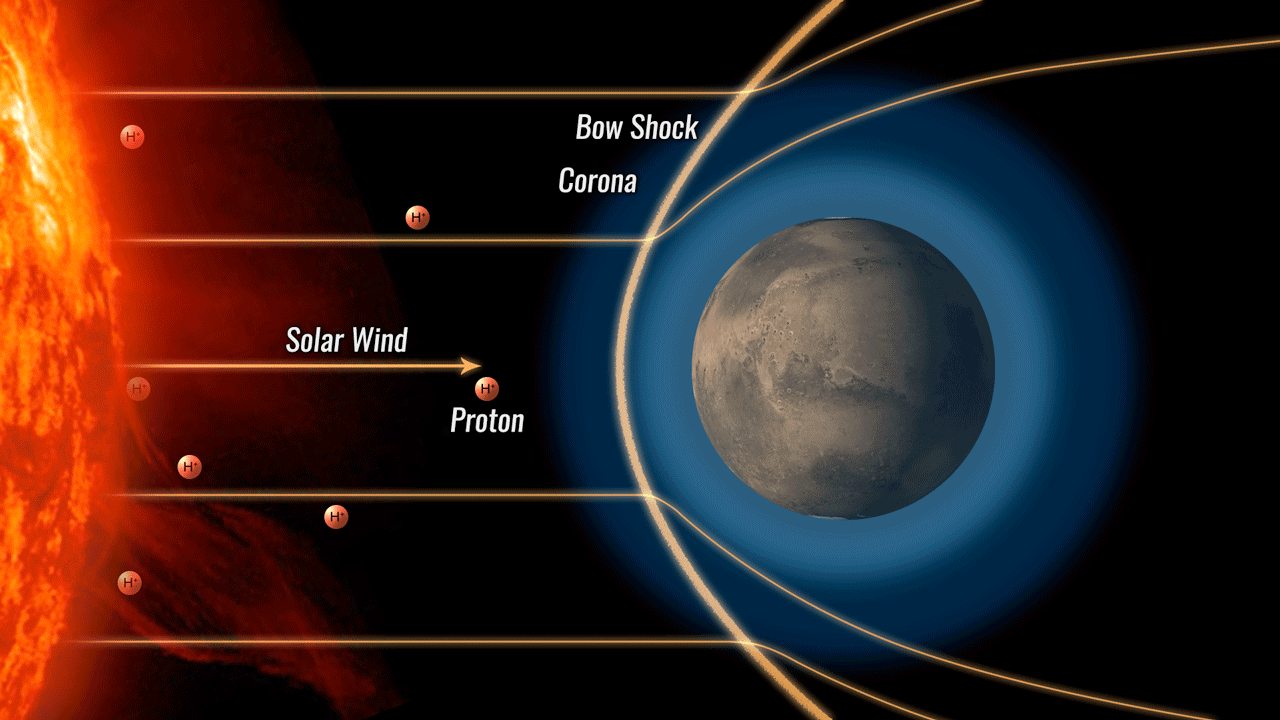On Mars, Auroras Glow All Summer Long in UV Light
By Mindy Weisberger - Senior Writer 16 hours ago

MAVEN's Imaging Ultraviolet Spectrograph observes the atmosphere of Mars, making images of neutral hydrogen and proton aurora simultaneously (left). Observations under normal conditions show hydrogen on the disk and in the extended atmosphere of the planet from a vantage point on the nightside (middle). Proton aurora is visible as a significant brightening on the limb and disk (right). (Image credit: Embry-Riddle Aeronautical University/LASP, CU Boulder)
Auroras on Earth typically appear when streams of charged particles from the sun — also known as solar winds, traveling at approximately 1 million mph (1.6 million km/h) — slam into our planet's magnetic field. The high-energy collisions between solar particles and atmospheric gas particles create sky glows such as the northern and southern lights.
Mars' proton auroras also start with solar winds. But in this case, charged protons collide with a cloud of hydrogen surrounding Mars. There, they slurp electrons away from hydrogen atoms, which neutralizes the protons. When those energetic neutral atoms enter the lower atmosphere of Mars, their collisions with molecules produce ultraviolet glows — proton auroras, Hughes explained at AGU.
Why are these auroras so common during the Martian southern summer? "We have known for several years now about seasonal variation in the hydrogen corona" — the cloud of hydrogen surrounding Mars — which is at its highest altitude around the summer solstice, Hughes said. In other words, summer months are when Mars' hydrogen cloud is perfectly positioned to interact frequently with solar winds and produce near-constant proton auroras.
And that's not all the researchers discovered. As temperatures climb during summer months, rising dust clouds carry water vapor away from the Martian surface. "That causes hydrogen to break apart into hydrogen and oxygen, and that causes it to escape," Hughes said. "Because of that — and because of the connection between solar wind protons interacting with the hydrogen in Mars' atmosphere — we know that when we're seeing proton aurora, the source of that is not only the solar wind but also this water that's breaking apart and being lost to space."
More:
https://www.livescience.com/martian-proton-auroras.html
